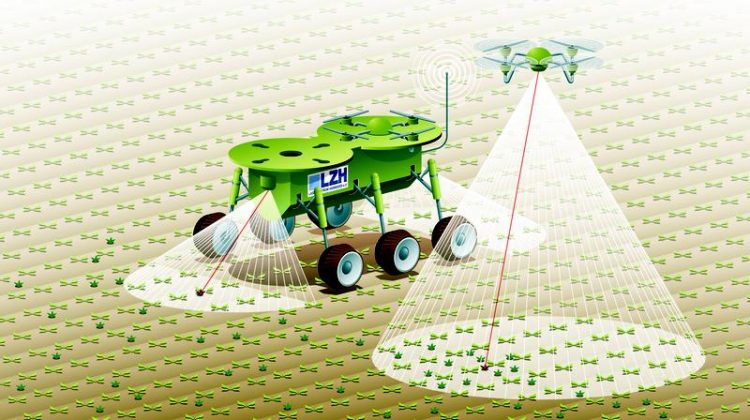Laser versus weeds: LZH shows Farming 4.0 at the Agritechnica

Vision of an agriculture of the future, by means of autonomously driving or flying systems, weeds can be removed from the field in a sustainable and environmentally friendly way. Graphic: LZH
The new approach of the LZH is based on the non-contact, optical interaction of light with biological material: cameras can be used to distinguish weeds from crops.
This is the basis for using laser radiation to precisely damage weeds and thus help crops to gain a decisive growth advantage.
The use of herbicides can be drastically reduced with such a process. Since laser radiation acts purely physically, no resistances are formed, the soil can be preserved and beneficials are protected.
In addition, the laser-based approach can easily be integrated in Digital Farming.
Removing weeds from carrots, sugar beets and onions
The first application areas are crops with a high added value in organic farming, such as carrots, sugar beet and onions.
The operation of such a laser-based system is possible on different platforms: autonomous, self-driving, front-mounted or rear-mounted.
PD Dr. Merve Wollweber, m.wollweber@lzh.de
Media Contact
More Information:
http://www.lzh.de/All latest news from the category: Trade Fair News
Newest articles

Red light therapy for repairing spinal cord injury passes milestone
Patients with spinal cord injury (SCI) could benefit from a future treatment to repair nerve connections using red and near-infrared light. The method, invented by scientists at the University of…

Insect research is revolutionized by technology
New technologies can revolutionise insect research and environmental monitoring. By using DNA, images, sounds and flight patterns analysed by AI, it’s possible to gain new insights into the world of…

X-ray satellite XMM-newton sees ‘space clover’ in a new light
Astronomers have discovered enormous circular radio features of unknown origin around some galaxies. Now, new observations of one dubbed the Cloverleaf suggest it was created by clashing groups of galaxies….





















